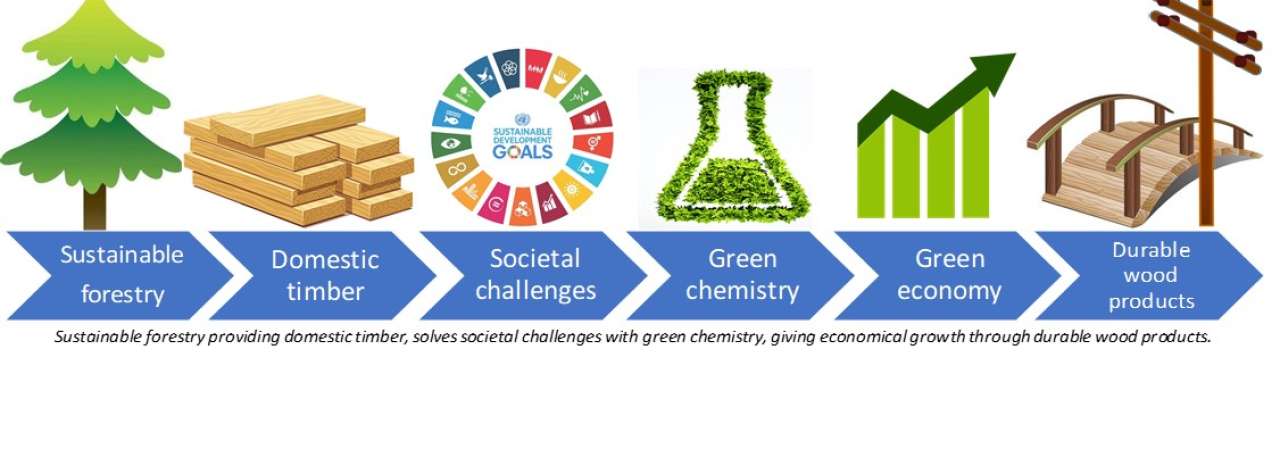Division of Forest and Forest Resources
Increased valorisation of domestic timber by a novel wood modification system

End: dec 2022
Start: jan 2020
Sustainable forestry providing timber, solves societal challenges with green chemistry, giving economical growth through durable wood products
| Status | Concluded |
| Start - end date | 21.01.2020 - 31.12.2022 |
| Project manager | Andreas Treu |
| Division | Division of Forest and Forest Resources |
| Department | Wood Technology |
| Funding source | The Norwegian Research Council |
Wood modification provides dimensional stability and extends the service life of wood by minimising threats from biological attack. Modified wood has gained market share in Europe across a range of Use Classes. A novel wood modification system using a combination of sorbitol and citric acid in wood has shown enhanced properties such as increased dimensional stability, increased durability against decay fungi and less susceptibility to blue-stain fungi. Many domestic timber species are not used for wood modification because of their refractory behaviour, inhomogeneity or small and variable dimensions. However, fast growing spruce and underutilized birch, as well as Scots pine are all candidates for wood modification. In addition, reducing the wood dimensions, for example cutting veneer, would make it easier to treat and modify the material. Utilizing glueing and self-laminating properties of such modified veneer for engineered wood products would broaden the application portfolio.
The main objective of ValorWood is to further develop a novel wood modification system from bench scale to pilot scale and to provide new use areas for Norwegian wood species. Treatment and process will be optimized, material properties will be evaluated, the environmental impact and the economic feasibility will be analysed.
Publications in the project
Abstract
No abstract has been registered
Authors
Gry Alfredsen Erik Larnøy Greeley Beck Johan Bjørnstad Lone Ross Callum Aidan Stephen Hill Andreas TreuAbstract
No abstract has been registered
Abstract
No abstract has been registered
Abstract
No abstract has been registered
Abstract
No abstract has been registered
Abstract
The aim of this research is to determine if the polyesterification of sorbitol and citric acid in wood has a future potential as a wood modification process. Pine wood was impregnated with an aqueous solution containing citric acid and sorbitol and was thereafter cured at 103 or 140°C for 18 hours. The dimensional stability and leaching resistance were studied for both modification temperatures. The leachates from the modified wood samples were analysed by HPLC and the susceptibility to decay and staining fungi were studied. Impregnated samples cured at 140°C showed a permanent (leach-resistant) increased dimensional change, but samples treated at 103°C were not stable to leaching. Treated samples cured at 103 and 140°C showed significant resistance to white-rot (Trametes versicolor) and brown-rot decay (Postia placenta) after a leaching procedure. Furthermore, samples cured at 103 and 140°C (leached and unleached) were significantly less susceptible to blue-stain fungi than the untreated controls.
